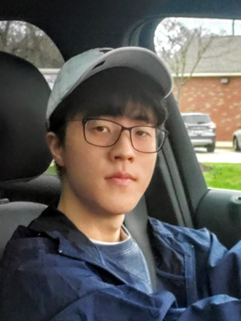Editor's Choice Pick: "Validation of Impact-absorbing Football Helmet Facemask for Head Injury Prevention with Simulation"
Keep reading to find out more about one of our Editor’s Choice picks and the student author at the Journal of Emerging Investigators.

Meet the Student Author
Kunwoo Kim is a senior at Detroit Country Day School. He loves American football because of the parabolic path of the ball, great athletic capabilities of players, wonderful strategy, and unexpected results that make the games super exciting. However, he really cannot stand watching injuries, especially head injuries, which might well lead to permanent impairment or at worst, life-threatening concussions. For a way to contribute to this great sport, he was passionate about enhancing the safety of the players and published papers on football helmets.
In addition to his research, he is a member of the fine art conservatory at school and has been awarded the Scholastic Art Awards. Kunwoo will attend UPENN engineering as a Ben Franklin Scholars this fall.
Learn More About Kunwoo’s Research
In his attempt to contribute to the safety of American football players, Kunwoo looked into the material that is used to make the facemasks on the helmets. He focused on the facemasks for a couple reasons. The first is that a lot of recent innovation in football helmets has been focused on the outer shell and interior padding. These areas are very important in protecting players against injuries such as skull fractures and contribute to the mitigation of concussion risk.
The second is that facemasks act like the “crumple zone” of a football helmet. You may not think about it outside of your physics class, but the crumple zone of a car is an important feature that absorbs the energy of any impacts by (as the name suggests) crumpling. This prevents the energy from the collision transferring fully to any passengers. So by focusing on the material facemasks are made from Kunwoo hoped to find the right balance between rigidity (which would prevent physical injuries to the face) and the ability to absorb some of the impact velocity.
Through his research, Kunwoo realized that most current facemasks are made from rigid materials, such as titanium or carbon steel. He designed his own facemasks made of a steel wire of varying thickness coated with polycarbonate. Importantly, Kunwoo designed these facemasks to use existing clips on helmets. Using computer simulations, Kunwoo tested the performance of each facemask in a ram impact test and a helmet-to-helmet collision. When he looked at the head translation velocity and head rotation velocity he saw that both of his hybrid mask designs showed better performance compared to a titanium facemask in terms of mitigating concussion risk. In fact, Kunwoo estimates from his simulations that these hybrid facemasks could decrease concussion risk by about 50%.
Kunwoo says future work is needed to actually test his designs outside of computer simulations. These tests would be important next steps to determine if his hybrid facemasks are viable alternatives to the current titanium and carbon steel standards. In addition, these tests would also provide information on the life span of these facemask designs as there is a fine line between a facemask being able to absorb an impact vs. splintering/bending into the player’s face.
Please check out Kunwoo’s full manuscript to see why it was selected as an Editor’s Choice manuscript.
The material on this page was prepared by Kari Mattison, JEI Editor in Chief. Kunwoo Kim provided the photo and personal biography which was edited lightly for clarity.